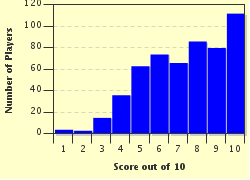Quiz Answer Key and Fun Facts
1. Perhaps the best known early exponents of the patter song were Gilbert & Sullivan. Rapid fire, clever lyrics were a mainstay of their many comic operas. During the first act of their first major success, Sir Joseph Porter, the intended husband of Josephine (who of course loves lower class Ralph Rackstraw), sings about his early days: 'I cleaned the windows and I swept the floor, And I polished up the handle of the big front door. I polished up that handle so carefullee, That now I am the Ruler of the Queen's Navee!' On which fictional vessel did the action take place?
2. Given their prominence in creating memorable patter songs, Gilbert & Sullivan deserve a second question! Which of their famous works contained these lyrics "I am the very model of a modern Major-General, I've information vegetable, animal, and mineral"?
3. Patter songs were much in vogue before Gilbert & Sullivan! One of the great patter songs in classical music is the 'Largo al Factotum' from 'The Barber of Seville'. Which 19th-century Italian composed this wonderful opera?
4. 'I've been everywhere' lists the places the singer has visited in travels around their country, invariably resulting in lyrics that are a challenge to repeat without mistake and in time with the music. But which country was the focus of the original version, recorded by Lucky Starr in 1962?
5. In whose court were the 'boys who put the powder on the noses of the faces of the ladies of the harem'?
6. It takes considerable talent to turn a long list of items into a popular song. Tom Lehrer managed this feat by reciting the names of which objects in 1959?
7. One of the most unusual, and arguably impressive, patter songs was written entirely in palindromes by 'Weird Al' Yankovic. Which famous singer known for his own quirky lyrics was the gentle target of this parody called simply 'Bob'?
8. If the lyrics of the patter song are in a foreign language, they don't even have to make much sense! Which singer released the three-chord pop tune 'Ça plane pour moi' in 1977?
9. Not all patter songs are comedic. In which Number One hit record did Billy Joel catalog many of the major events, crises and disasters over the period 1949 to 1989 (in chronological order)?
10. Which 1990s animated television show, produced by Steven Spielberg, used many patter songs to educate children about topics including countries of the world and US presidents?
Source: Author
MikeMaster99
This quiz was reviewed by FunTrivia editor
agony before going online.
Any errors found in FunTrivia content are routinely corrected through our feedback system.

